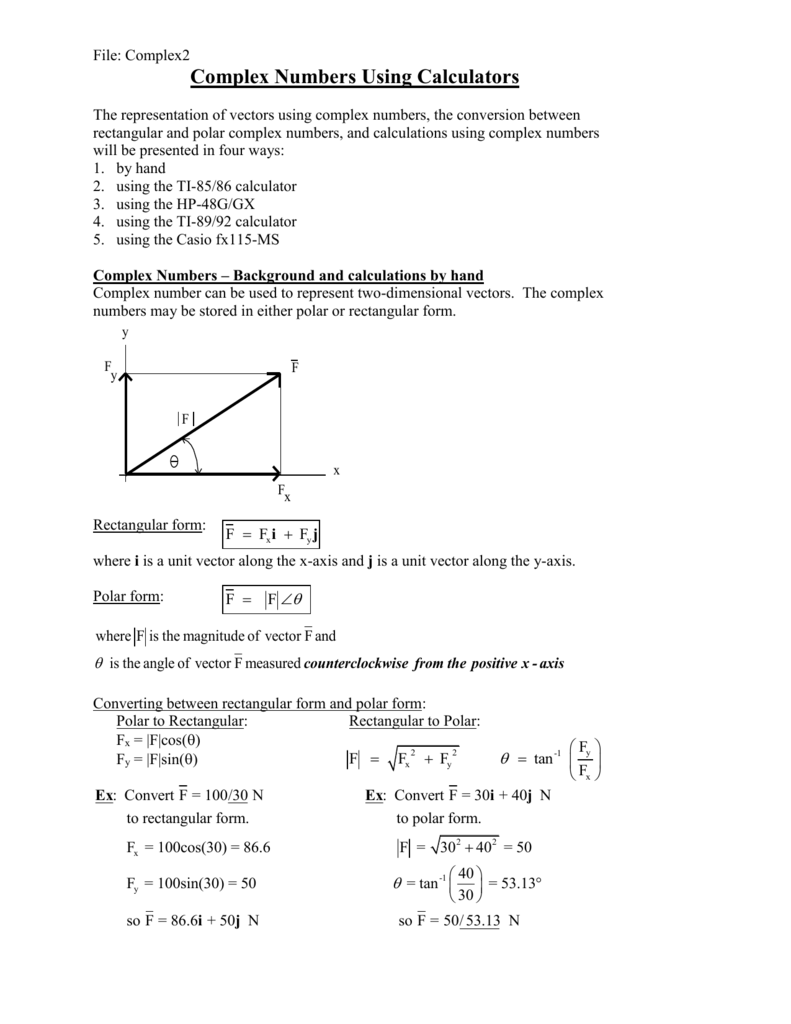

- #TI NSPIRE COMPLEX NUMBERS POLAR FORM HOW TO#
- #TI NSPIRE COMPLEX NUMBERS POLAR FORM SERIES#
- #TI NSPIRE COMPLEX NUMBERS POLAR FORM FREE#
If we look at what's in F, we get the real and the imaginary vectors, but they don't tell us the current in Ampères. The contents of memory location F, the total current in our circuit, is a complex number in rectangular notation. After all, didn't we set our calculator to degrees mode in the beginning? That is true, but reactance is computed in radians rather than degrees. You may wonder why we enter two times pi and not 360 degrees in our formula. It is an imaginary vector at a phase angle of -90 degrees. It starts with a minus and ends with an i. You can check if you did everything right by typing H on a line of its own and inspecting its value.

Let's get started!įirst we need to compute the reactance for this particular capacitor at 60 Hz. In this instructable I will be using screenshots from my TI-83 Plus, so there might be slight differences in what you see on your graphing calculator, but generally they are very much the same.Īll you need is patience, a piece of paper, a pen and a TI calculator. I have both a Casio and a TI, and I can only say the TI range of calculators is very popular for a reason.
#TI NSPIRE COMPLEX NUMBERS POLAR FORM HOW TO#
If you can do that, you can certainly learn how to do more complicated circuits.Īs for the TI calculator: I'm a part time teacher, and my students find the TI calculators far more intuitive to use than the Casio or other ones.
#TI NSPIRE COMPLEX NUMBERS POLAR FORM SERIES#
The example we will follow is the first RC example from the AC (alternating current) book from that website: chapter 4.3, Series resistor-capacitor circuits.

#TI NSPIRE COMPLEX NUMBERS POLAR FORM FREE#
If you want to learn electronics, I highly recommend the free (yes, free) books from the All About Circuits website. It's just about doing the computations and getting the right results on your TI calculator. In this instructable we won't be explaining the electronics. You're learning electronics, but how in the world are you going to do those computations with real and imaginary numbers on your brand new Texas Instruments TI graphing calculator? So many knobs to press.


 0 kommentar(er)
0 kommentar(er)
